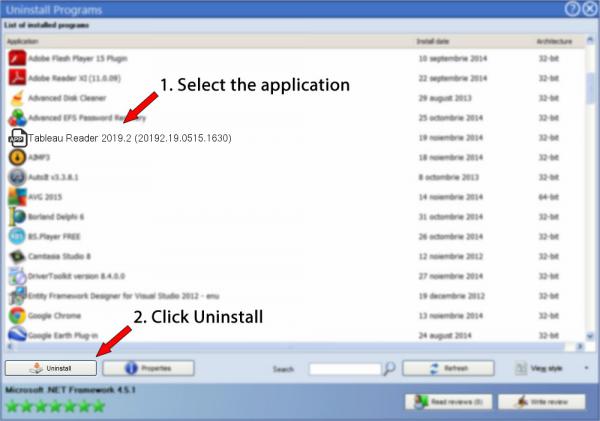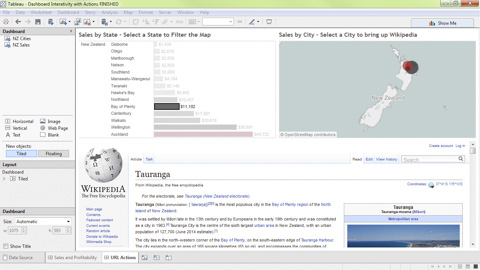
Tableau Reader 2020.3 (202.1333) is a program offered by the software company Tableau Software. Some users choose to uninstall this application. This can be troublesome because doing this by hand requires some experience related to Windows program uninstallation. Tableau Reader 2020.3 (2020.3.3) TU-152: Important: Disclaimer: This webpage is intended to provide you information about patch announcement for certain specific. Tableau Reader is a free desktop application that you can use to open and interact with data visualizations built in Tableau Desktop. Filter, drill down and discover. Need more sharing power? With Tableau Server or Tableau Online, you always get the most recent.
- Tableau Reader 2020.3
- Tableau Reader Download 2020
- Descargar Tableau Reader 2020.3
- See Full List On Tableau.com
- Cached
Tableau 2020.3 Beta is Here! We value your input and are excited to hear your thoughts on the features that we have planned for the next release. Sign in with your Tableau ID and check it out. Thank you for your participation and input! The Tableau Pre-Release Team. Tableau 2020.3 Beta is Here! We value your input and are excited to hear your thoughts on the features that we have planned for the next release. Sign in with your Tableau ID and check it out. Thank you for your participation and input! The Tableau Pre-Release Team.
Tableau provides the tabcmd command-line utility which you can use to automate site administration tasks on your Tableau Server site. For example, creating or deleting users, projects, and groups.

Note: The tabcmd utility is included with Tableau Server and is automatically installed on the initial server node. However its installer is not included, so if you want to run tabcmd on a computer other than the initial server node, you need to download the installer from the Tableau website. For more information, see Install tabcmd below.
Install tabcmd
When Tableau Server or Tableau Online is upgraded to a new version, if an updated version of tabcmd is required, you can download it from the Tableau Server Releases page on the Tableau website.
For Tableau Server, we recommend you download the version that matches your server version. For Tableau Online, we recommend you always download the latest version to avoid issues caused by version incompatibilities. In either case, using an out of date version of tabcmd can cause errors and unpredictable results.
Open a web browser and go to the Tableau Server Releases(Link opens in a new window) page. Go to this page even if you use Tableau Online.
If you're using:
- Tableau Online, select the latest Tableau Server release.
- Tableau Server (Windows or Linux): select the release that matches your server version.
In either case, if the expanded information shows maintenance releases, select the latest maintenance release or the one that matches your server version.
This takes you to the release notes page, called Resolved Issues, where you can read about security improvements and resolved issues.
Scroll to the Download Files section under the resolved issues, select the tabcmd download link that is compatible with the computer on which you’ll run the tabcmd commands.
The remaining steps refer to this computer as “the tabcmd computer.”
Save the installer to the tabcmd computer, or a location accessible from that computer .
Complete the installation steps as appropriate for the operating system of the tabcmd computer:
- Windows
By default tabcmd is installed to
C:Program FilesTableauTableau Server<version>extrasCommand Line Utility. You can change this during installation and recommend that you install tabcmd to a folder namedtabcmdat the root of the C: drive (C:tabcmd). This can make it easier to locate and run, and will accommodate some limitations with the Windows operating system if you add the tabcmd directory to the Windows PATH.Note The tabcmd Setup program does not add the tabcmd directory to the Windows PATH variable. You can add it manually, or you can include the full path to tabcmd each time you call it.
You can install tabcmd in two ways on Windows:
Double-click the installer to follow the steps in the UI:
Accept the license agreement.
If you want to install to a non-default location, click Customize and type or browse to the location you want to install tabcmd to.
Click Install.
If you are prompted by Windows Defender Firewall or User Account Control, click Allow access.
Run the installer from a command prompt:
Open a command prompt as administrator on the tabcmd computer.
Navigate to the directory where you copied the tabcmd installer.
Install tabcmd:
To install to a non-default location:
For example:
For a complete list of command line options you can use with the tabcmd installer, run the installer with a /?. For more information on tabcmd installer command line options, see Install Switches and Properties for tabcmd (Windows).
The tabcmd Setup program creates logs in
C:Users<user>AppDataLocalTempyou can use if you have problems installing tabcmd. The logs use the naming conventionTableau_Server_Command_Line_Utility_(<version_code>)_##############.log. - Linux
Note: To run tabcmd on a Linux computer, you must have Java 8 (also called Java 1.8) installed. On RHEL-like systems this will be installed as a dependency when you install tabcmd. On Debian-like systems, you need to install Java 8 (1.8) separately if it is not already installed.
Log on as a user with sudo access to the tabcmd computer.
Navigate to the directory where you copied the
.rpmor.debpackage that you downloaded.On RHEL-like distributions, including CentOS, run the following command:
sudo yum install tableau-tabcmd-<version>.noarch.rpmOn Ubuntu and Debian, run the following command:
sudo apt-get install ./tableau-tabcmd-<version>_all.deb
To uninstall tabcmd from a Linux computer, see the documentation for the Linux variety you are running.
(Optional) Add the fully qualified location where tabcmd is installed to your system path to allow you to run tabcmd commands without changing to that location, or specifying the location with each command. Steps to do this depend on the type and version of your operating system. For more information, see PATH_(variable).
How to use tabcmd
The basic steps for using tabcmd are as follows:
Open the Command Prompt as an administrator.
On a Windows computer, if you installed tabcmd on a computer other than the initial node, change to the directory where you installed tabcmd.
On a Linux computer, you do not need to change to the install directory.
Run the tabcmd command.
When you use tabcmd, you must establish an authenticated server session. The session identifies the server or Tableau Online site and the user running the session. You can start a session first, and then specify your command next, or you can start a session and execute a command all at once.
Important: If you are using tabcmd to perform more than one task, you must run tasks one after another (serially), rather than at the same time (in parallel).
Commands (such as login) and the options (such as -s, -u, etc.) are not case sensitive, but the values you provide (such as User@Example.com) are case sensitive.
Examples
The following command demonstrates starting a session with the Tableau Server named tabserver.mycompany.com:
Tableau Reader 2020.3
The next example shows a command that deletes a workbook named Sales_Workbook:
Tableau Reader Download 2020


Here’s how to accomplish all of the above with one command—note that you do not need login here:
A Tableau Server can run multiple sites. When a workbook is on the Default site of a multi-site server you don't need to specify Default, the above command is sufficient. However, if the command applies to something on a site other than Default, you need to specify the site ID for that site (see login). Here's the same command for a workbook that's on the West Coast Sales site (site ID wsales):
The options -s, -t, -u, and -p are among the tabcmd global variables, which can be used with any command.
For more information, see tabcmd Commands.
Status messages and logs
When a command is successful, tabcmd returns a status code of zero. A full error message for non-zero status codes is printed to stderr. In addition, informative or progress messages may be printed to stdout.
A full log named tabcmd.log that includes debugging, progress, and error messages is written to C:Users<username>AppDataLocalTableau.
Other articles in this section
Descargar Tableau Reader 2020.3

See Full List On Tableau.com
Ivanti Patch for SCCM Plugin

Cached
– Added QTOMCAT85610 – Apache Tomcat 8.5.61.0 – None
– Added QCCLEAN5758238 – CCleaner 5.75.8238 – None
– Added QGIT22923 – GIT for windows 2.29.2.3 x64 – Important
– Added QGIT22923 – GIT for windows 2.29.2.3 x86 – Important
– Added QFS440140 – Google Drive File Stream 44.0.14.0 – None
– Added QLMI4114148 – LogMeIn 4.1.14148 – None
– Added QMBAM430206 – Malwarebytes 4.3.0.206 – None
– Added QWIRES329 – Wireshark 3.2.9 x64 – None
– Added QWIRES329 – Wireshark 3.2.9 x86 – None
– Added QWIRES341 – Wireshark 3.4.1 x64 – None
– Added QWIRES341 – Wireshark 3.4.1 x86 – None
